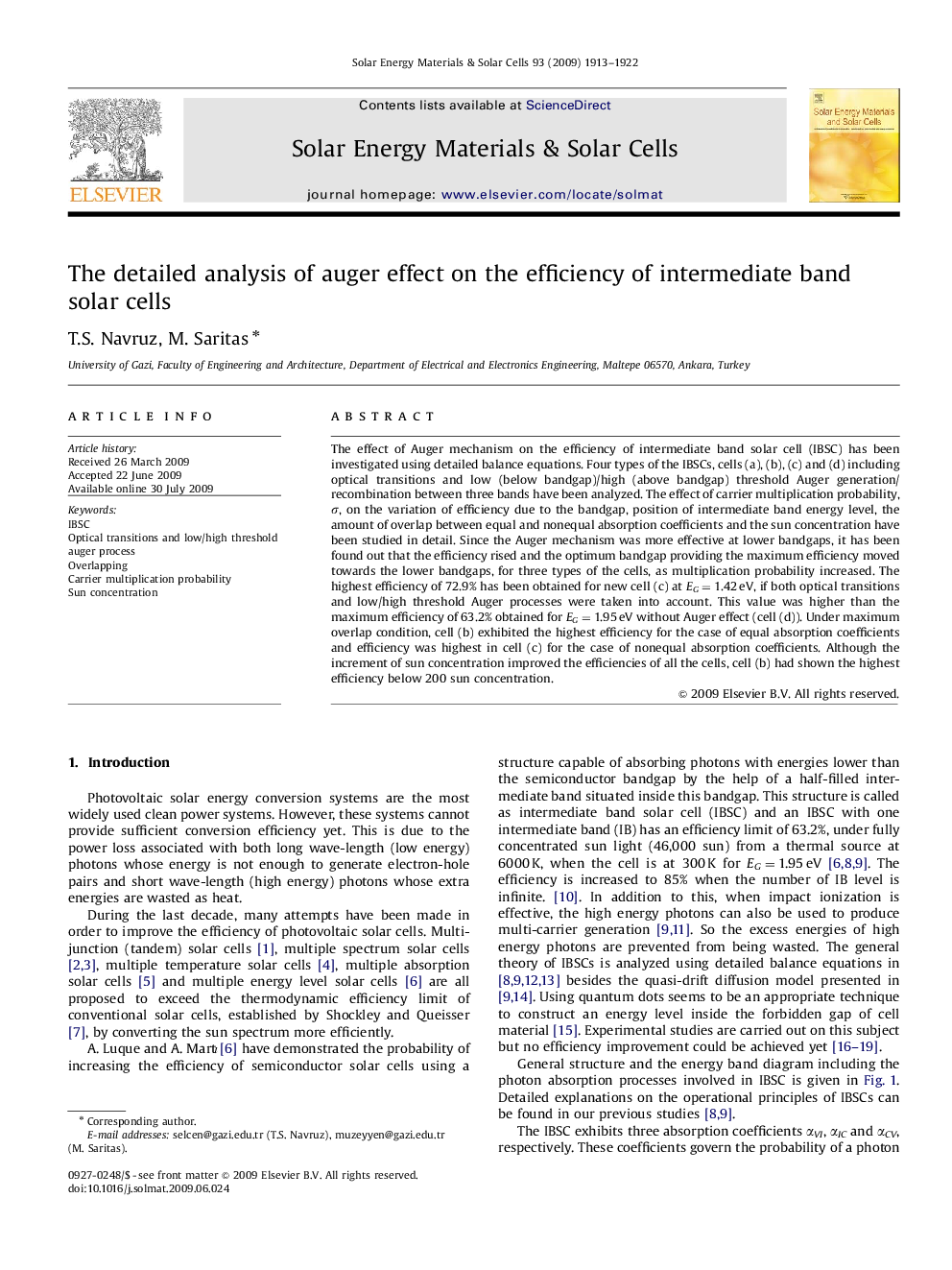| Article ID | Journal | Published Year | Pages | File Type |
|---|---|---|---|---|
| 79696 | Solar Energy Materials and Solar Cells | 2009 | 10 Pages |
The effect of Auger mechanism on the efficiency of intermediate band solar cell (IBSC) has been investigated using detailed balance equations. Four types of the IBSCs, cells (a), (b), (c) and (d) including optical transitions and low (below bandgap)/high (above bandgap) threshold Auger generation/recombination between three bands have been analyzed. The effect of carrier multiplication probability, σ, on the variation of efficiency due to the bandgap, position of intermediate band energy level, the amount of overlap between equal and nonequal absorption coefficients and the sun concentration have been studied in detail. Since the Auger mechanism was more effective at lower bandgaps, it has been found out that the efficiency rised and the optimum bandgap providing the maximum efficiency moved towards the lower bandgaps, for three types of the cells, as multiplication probability increased. The highest efficiency of 72.9% has been obtained for new cell (c) at EG=1.42 eV, if both optical transitions and low/high threshold Auger processes were taken into account. This value was higher than the maximum efficiency of 63.2% obtained for EG=1.95 eV without Auger effect (cell (d)). Under maximum overlap condition, cell (b) exhibited the highest efficiency for the case of equal absorption coefficients and efficiency was highest in cell (c) for the case of nonequal absorption coefficients. Although the increment of sun concentration improved the efficiencies of all the cells, cell (b) had shown the highest efficiency below 200 sun concentration.
